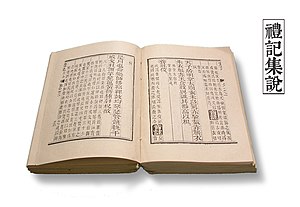Body text

Body text or body copy is the
Body text has two slightly different meanings, depending on context. A
Book design
The 'body matter' is the group of pages that contain the body of the text of the book. The
At one time, books were produced as 'letter-books', (although in most cases, this was still outside the paragraphs of the typesetter's body text).
Typesetting
Typesetting of the body text is the work of the printer and their typesetter. Typesetting of the other parts, the front matter, and pages of the body matter involving specific design of their layout are, if budget permits, the remit of the book designer.[4]
Typesetting of the body text is generally considered to be rote work: skilled, but not inherently creative. Computer typesetting was thus first applied to body text. This represented the bulk of the work, yet also that part requiring the least human creative input.
Styles
Body text is usually
Web design
HTML follows the 'book designer's' meaning of body text. There is an HTML element named <body> that serves to delimit the body matter from the front matter (or in HTML, the <head>) that contains metadata such as the page title. The typesetting of the web page is carried out by document body elements within this.
There is no specific HTML element for 'body text' in the typesetting sense. The block elements of <p> and <div> are both used for this, but these elements are used for a great many general markup purposes within HTML and so there is not usually any semantic implication that they always contain 'body'. <p> would generally be favoured over <div>.
References
- ISBN 0-8118-0304-X.
- ^ a b Wilson, The Design of Books, p. 61.
- ^ ISBN 0-520-07146-8.
- ^ Wilson, The Design of Books, Chapter 6: Design Approaches.
- ^ Manual for Writers and Editors. Springfield: Merriam-Webster. 1998. p. 329.

